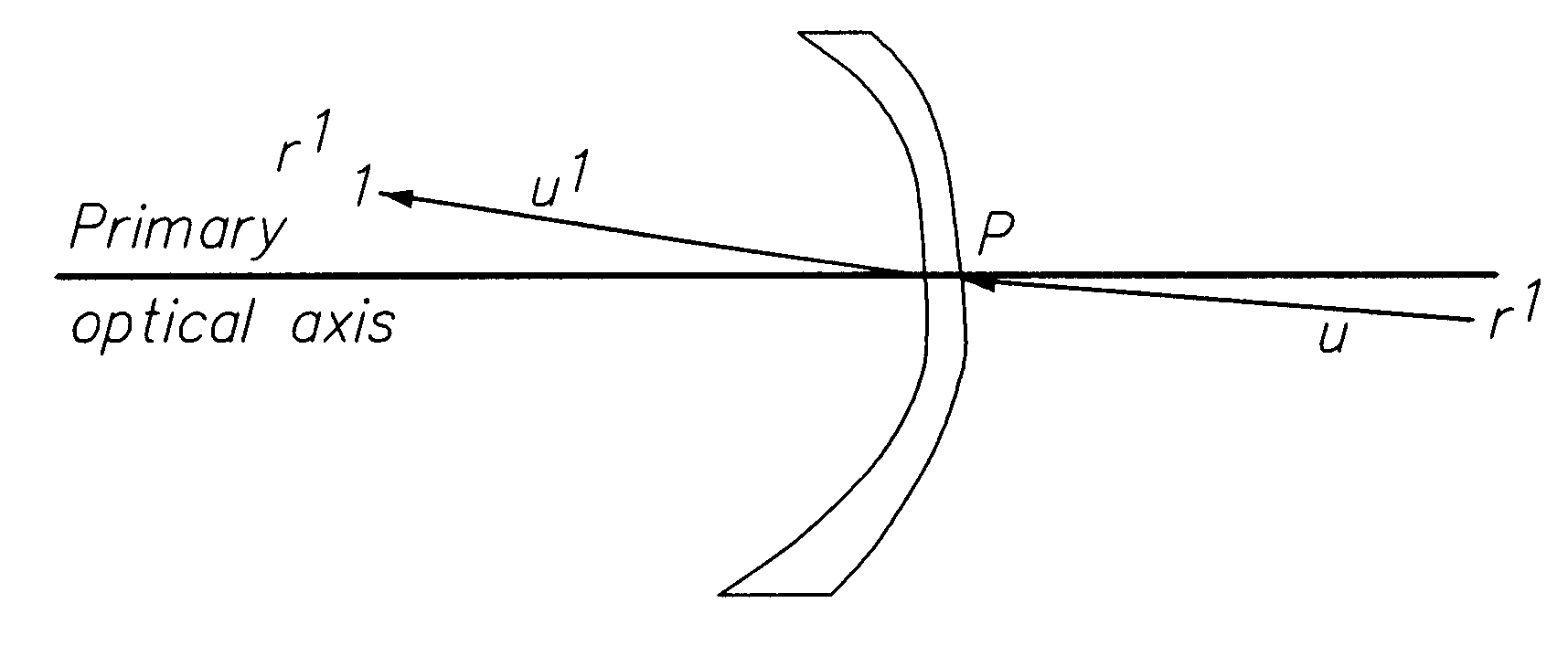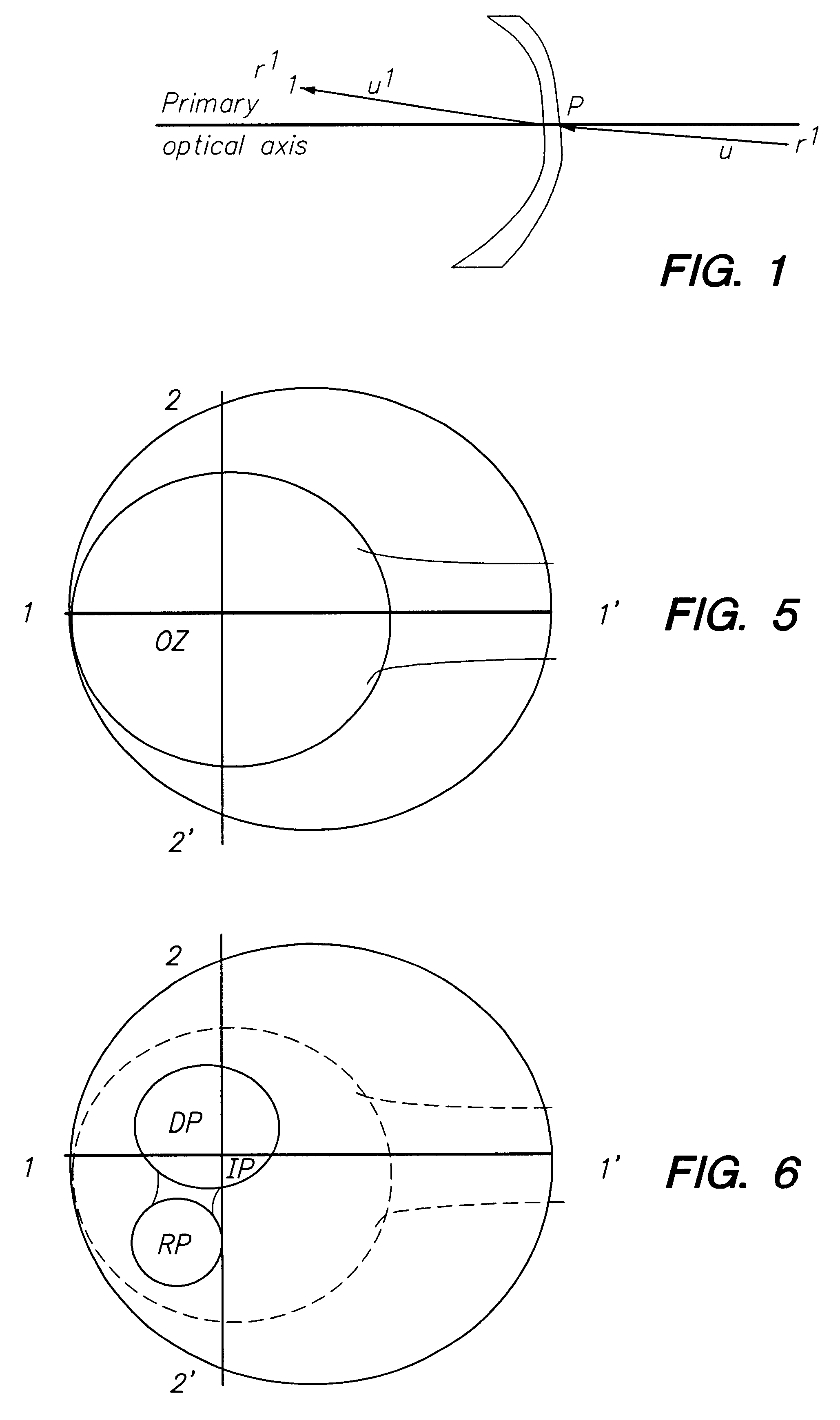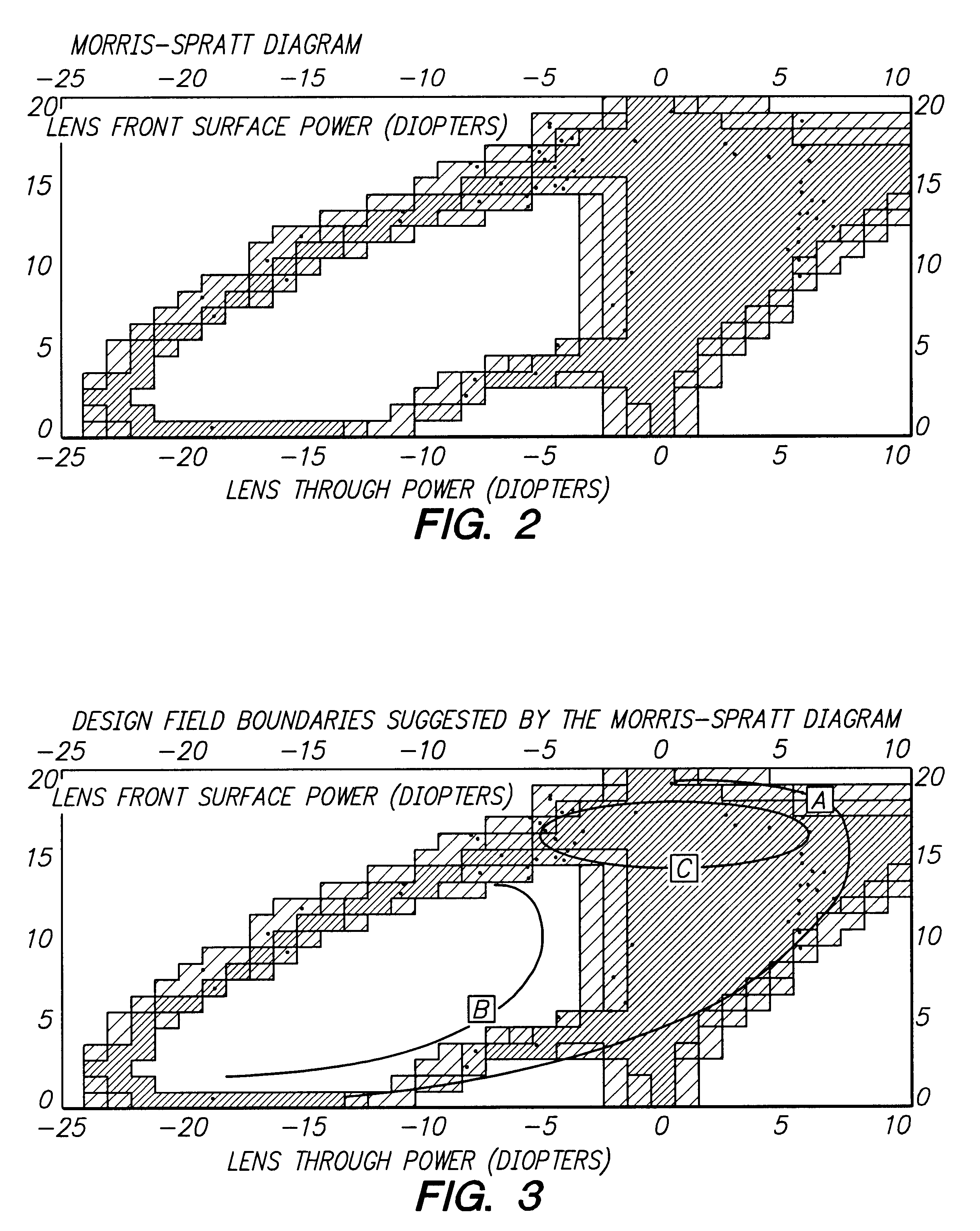Shaped ophthalmic lenses
- Summary
- Abstract
- Description
- Claims
- Application Information
AI Technical Summary
Benefits of technology
Problems solved by technology
Method used
Image
Examples
example 1b
In the event that a piano extension is required, this may be achieved without prismatic jump by extending one or other of the surfaces from the established boundary of piano power outward to greater radii. An example is calculated and depicted below in FIGS. 8a to d. Note that the tangential curvature and power coefficients are continuous, but thesurface has a discernible kink to it. Accordingly it would be visible to an observer. However, it is free of local power oscillations that would emerge from a discontinuity in sagittal power if the lens were rotationally symmetric.
example 2a
FIG. 9a-d illustrates a six base optical lens element according to the present invention with mean through power of +3 D. The lens element was designed in a similar manner to that described in Example 1 except that the coefficients are as follows:
A.sub.2 =5.12*10.sup.-3, A.sub.4 =1.34*10.sup.-7, A.sub.6 =7.02*10.sup.-12, A.sub.8 =4.60*10.sup.-16, and
B.sub.0 =4.5, B.sub.2 =2.56*10.sup.-3, B.sub.4 =1.68*10.sup.-8, B.sub.6 =2.19*10.sup.-13, B.sub.8 =3.59*10.sup.-18
R.sub.0 =30, R.sub.2 =0, R.sub.4 =1, R.sub.6 =-1.9, R.sub.8 =0, m=2.
The initial form coefficients A'.sub.2 which define the local cross-curve vertically are computed as before at each value of x from the changing value of the horizontal curvature (surface power) at the axis 1-1'. The dependence of A'.sub.2 and the mean through power of the lens element at the axis 1-1' are shown also in FIG. 9.
Note the extension of the temporal edge beyond the limit of a simple spherical lens of the same power and center thickness.
example 2b
In this example, a plan of extension is provided in a manner similar to that illustrated in Example 1B attached. The resultant optical lens element is illustrated in FIGS. 10a to d below.
PUM
 Login to View More
Login to View More Abstract
Description
Claims
Application Information
 Login to View More
Login to View More - R&D
- Intellectual Property
- Life Sciences
- Materials
- Tech Scout
- Unparalleled Data Quality
- Higher Quality Content
- 60% Fewer Hallucinations
Browse by: Latest US Patents, China's latest patents, Technical Efficacy Thesaurus, Application Domain, Technology Topic, Popular Technical Reports.
© 2025 PatSnap. All rights reserved.Legal|Privacy policy|Modern Slavery Act Transparency Statement|Sitemap|About US| Contact US: help@patsnap.com



